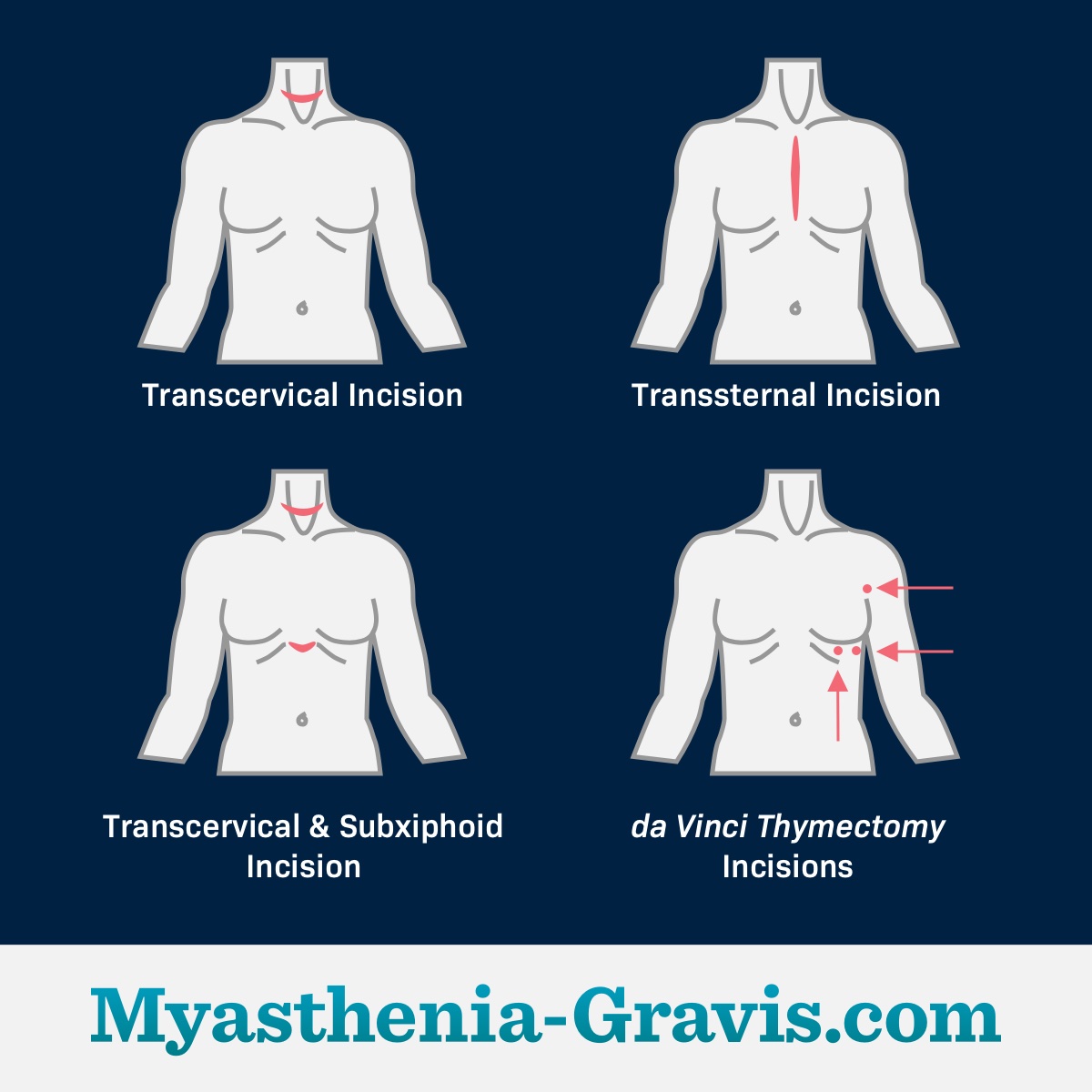Thymectomy: A Treatment for Myasthenia Gravis
Reviewed by: HU Medical Review Board | Last reviewed: October 2024 | Last updated: October 2024
Myasthenia gravis (MG) is an autoimmune disease that causes certain muscles to become weak after use. In people with MG, the thymus gland is often enlarged, overactive, or has tumors. That is why thymectomy, or surgery to remove the thymus, may be recommended. The surgery improves symptoms in some people with MG.
What is the thymus?
The thymus gland sits behind the breastbone, just over the heart. It helps control the immune system, and when it malfunctions, it may cause myasthenia gravis. Many people with MG have a large or overactive thymus gland.1
Some people with MG also develop tumors on their thymus gland. These tumors are called thymomas. About 1 out of 10 people with myasthenia gravis have a thymoma. These tumors may be cancerous or cause lasting health issues.1
Who benefits from thymectomy?
Surgery to remove the thymus, or thymectomy, is not right for every person with MG. A small international study looked at 126 people with MG and found thymectomy was most likely to improve symptoms for people:1-4
- With generalized MG
- Who had had symptoms for less than 3 to 5 years (called early thymectomy)
- Younger than 65 years old
- For whom anticholinesterase drugs do not work
The study found thymectomy greatly reduced muscle weakness and allowed these people to take lower doses of steroids and other drugs that help control the immune system.1-4
Thymectomy generally is not recommended for people with:2,4
- Ocular MG
- MuSK or LRP4 antibodies
- Seronegative MG (no detected auto antibodies)
- Late-onset MG if they are older than 65
The chances of remission
Just after surgery, many people with MG find their symptoms get worse before getting better. Then, muscle weakness slowly begins to improve months to years after the surgery. Remission, or disappearance of symptoms, happens most often in people:4
- Younger than 60 to 65
- Who have had MG for 2 years or less
- Who had an enlarged thymus but not a thymoma
- Had more severe symptoms
- Tested with high levels of antibodies before surgery
The chances of remission increase over time. Between 4 and 6 of every 10 people who had a thymectomy are in remission 7 to 10 years after surgery. Between 8 and 9 of every 10 people with MG find their muscle weakness improves but may still have to take some medicines to control symptoms. One third find they no longer have to take any MG drugs.4
About the surgery
Thymectomy is elective surgery, not an emergency procedure. Doctors wait until the person is in good health before scheduling the surgery.4
It may be performed using minimally invasive or robotic surgery or traditional surgery. All thymus tissue must be removed, including any thymus tissue that has turned to fat. There is some evidence that leaving behind any thymus tissue is linked to recurrence.2,4
There are different incisions that may be used for the surgery, including those explained in the image below.
The stress of surgery on the body can temporarily worsen MG symptoms. Intravenous immunoglobulin (IVIG or plasmapheresis) may be done before surgery to improve muscle weakness and reduce the risk of complications during and after surgery.3
Talk to your doctor about whether thymectomy is a treatment option for you. They can explain the risks and benefits, and help determine if it is right for you.
